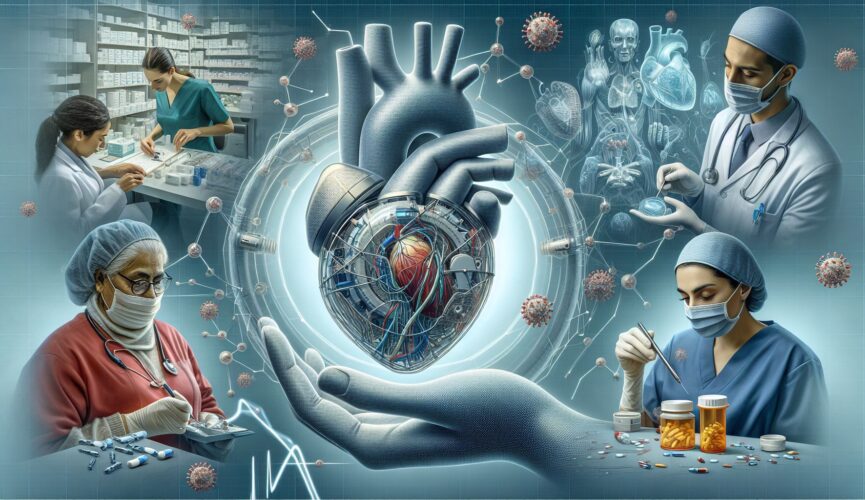In today’s rapidly advancing world, medical technologies play a crucial role in preventing, diagnosing, and treating diseases. From the simple stethoscope to cutting-edge genetic mapping, these innovations have revolutionized healthcare, saving countless lives and improving patient outcomes. For consumers eager to understand diseases and disease prevention, it is important to explore the incredible potential of medical technologies and their contributions to our well-being. In this article, we will delve into some of the most remarkable medical technologies that are saving lives every day.
The Impact of Diagnostic Imaging
One of the most invaluable medical technologies is diagnostic imaging. Utilizing various techniques such as X-rays, computed tomography (CT), magnetic resonance imaging (MRI), and ultrasound, healthcare professionals can visualize the internal structures of our bodies with great precision. Diagnostic imaging aids in the detection and prognosis of many diseases, including cancer, heart conditions, and neurological disorders, facilitating early intervention and significantly increasing survival rates.
In recent years, there have been significant advancements in imaging technologies. For instance, MRI machines today produce clearer and more detailed images, allowing healthcare providers to pinpoint abnormalities and plan appropriate treatments. Similarly, CT scans have become faster and safer, exposing patients to lower levels of radiation. With ongoing research and development, we can expect diagnostic imaging to continue saving lives by detecting diseases earlier and more accurately.
Robotic Surgery: Precision and Minimal Invasiveness
Another groundbreaking medical technology that has revolutionized healthcare is robotic surgery. Powered by robotic systems, surgeons can perform complex procedures with unmatched precision, control, and visibility. This technology allows for smaller incisions, reducing trauma, pain, and recovery time for patients. With enhanced magnification and dexterity, robotic surgery minimizes the risk of complications and maximizes the success of operations.
Moreover, surgical robots can access hard-to-reach areas, enabling surgeons to perform intricate procedures that were previously deemed impossible. For instance, surgeons can remove tumors deep within the brain or precisely mend delicate cardiac structures. With each successful robotic surgery, lives are saved, and patients can regain their health more quickly.
Telemedicine: Breaking Barriers to Healthcare
Telemedicine has emerged as a game-changing medical technology, bridging the gap between patients and healthcare providers, especially in remote or underserved areas. By leveraging communication and information technologies, patients can consult doctors and receive medical advice in real-time, regardless of their physical location. Telemedicine not only saves lives by allowing immediate access to healthcare professionals but also saves time and money by avoiding unnecessary hospital visits.
Moreover, telemedicine can play a vital role in disease prevention and management. By monitoring chronic conditions remotely, healthcare providers can detect changes in patients’ health and intervene promptly. Diabetes management, for example, can be improved through telemedicine platforms that allow patients to share their blood glucose levels with their healthcare team. Early intervention based on real-time data can prevent life-threatening complications and improve patients’ quality of life.
Advancements in Genetic Testing
Over the past few decades, genetic testing has emerged as a critical tool in diagnosing diseases and predicting an individual’s predisposition to certain conditions. By analyzing an individual’s DNA, healthcare professionals can identify genetic mutations linked to various diseases, allowing for customized treatments and targeted disease prevention strategies. Genetic testing has enabled proactive interventions for conditions such as breast cancer, hereditary heart diseases, and familial Alzheimer’s disease.
With the advent of next-generation sequencing technologies, genetic testing has become faster, more accurate, and increasingly affordable. As a result, it is now more accessible to the general population. The widespread availability of genetic testing empowers individuals to take control of their health and make informed decisions about disease prevention, leading to reduced morbidity and mortality rates.
Conclusion
In an era of remarkable medical advancements, it is essential to recognize the lifesaving capabilities of medical technologies. Diagnostic imaging, robotic surgery, telemedicine, and genetic testing are just a few examples of how these innovations are improving healthcare outcomes and saving lives. By understanding these medical technologies, consumers can actively participate in disease prevention and make well-informed decisions about their health.
As technology continues to progress, we can expect even more groundbreaking medical technologies to emerge. From artificial intelligence-assisted diagnostics to personalized medicine based on genomic data, the future promises even greater potential for disease prevention, early detection, and effective treatments. By embracing and supporting medical technologies, we can collectively contribute to a healthier and brighter future for all.
